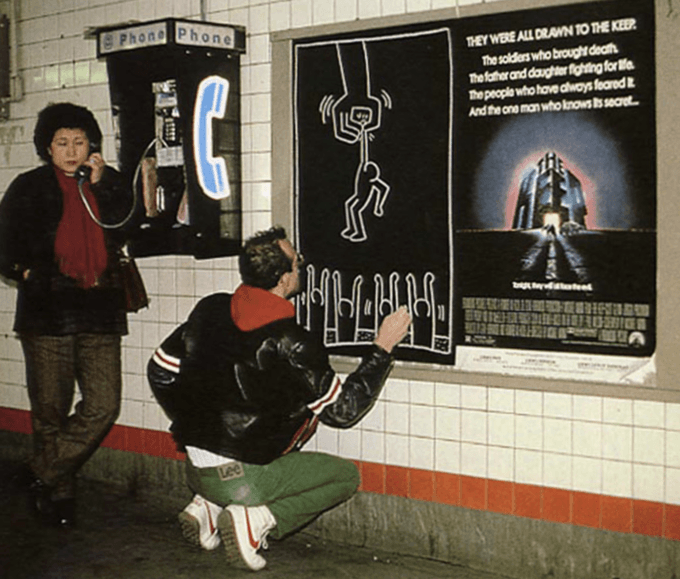How the US Constitution Fails to Protect the Environment

Pulp mill and export dock, Longview, Washington. Photo: Jeffrey St. Clair.
By Katrina Fischer Kuh and James R. May
Even a healthy U.S. democracy would struggle to respond effectively to the “wicked” problem of climate change. As humans, we would have to overcome innate cognitive limitations to accept the connection between everyday actions like driving and attenuated effects on climate. As voters, we would have to appreciate the importance of addressing a problem with limited immediate salience primarily for the benefit of future generations. Politicians would need the courage to fight for policies that would yield no visible benefits for voters in their political lifetimes.
Change would have to occur over the tooth and nail opposition of the fossil fuel companies—among the most powerful corporate special interests in the history of our country. We would need to be open to transformative change and a rethinking of values and priorities to develop a shared vision for a future radically different from settled expectations, all while reckoning with the ways that historical injustices—most notably colonialism and racism—produced and remain embedded in the systems that brought us to this precipice.
But our democracy is decidedly not healthy. Corporations pour money into elections virtually unrestrained and face no consequences for flagrantly lying to the public—most notably for present purposes about whether climate change is real and dangerous and what causes it—to maximize their profits. The right to vote is now more theoretical than real, with federal protections dismantled and many state and local governments adopting measures that make voting harder (especially for disfavored people, including communities of color).
The votes of those who make it into the voting booth are counted—our electoral system is sound. However, it is not perceived as such; ideological fantasies of voting fraud cause vast swaths of the public to reject legitimate electoral outcomes. And myriad pathologies in the information environment, from social media algorithms to purposeful disinformation efforts, have fractured our ability to talk to and reason with one another.
Nor is our climate system healthy or stable. We already limp from unprecedented crisis to unprecedented crisis—the Pacific Northwest heatwave in 2021, deadly fires in 2023, a hurricane that made landfall in Louisiana in 2021 and drowned 11 peoplein New York City basement apartments—with hardly a chance to catch our breath in between.
This rapidly changing physical reality adds further stress to our ailing democracy. We face the daunting task of attempting to transform our society, law, and economy to cease emissions and sequester carbon while also trying to adapt to ongoing and worsening dislocations from climate change.
In short, our democracy must somehow martial focus, purpose, and resources to address climate change’s long-term challenges to life and justice while enduring increasingly frequent and extreme climate-related events that take lives, exacerbate injustices, and put unprecedented strain on democracy and governance.
How the Constitution Obstructs Climate Policy
How and why does the constitutional status quo fail to meet the climate crisis? It begins with constitutional design. The Constitution grants the Supreme Court and such lower courts, as Congress establishes, “judicial authority.” Federal courts were thought to be the “least dangerous branch” and less prestigious appointments than, say, supreme courts in Virginia or New York—among the reasons some of the first appointed Supreme Court justices, John Jay and John Rutledge, quit the bench.
But the import of judicial review was transformed in Marbury v. Madison when then-Chief Justice John Marshall famously declared that it is “emphatically the duty of the Judicial Department to say what the law is,” as it has done in more than 20,000 decisions since its inception in 1789.
Since its inception to June 2022, the U.S. Supreme Court has had 116 justices. Yet very few have acknowledged that catastrophic climate change is happening and has been caused by humans. Even those justices who acknowledge climate change believe that Congress, not the courts, should address it.
The U.S. Constitution’s 4,543 all but ignore environmental concerns. It was crafted to address separation of powers, federalism, and civil liberties. There is an extensive taxonomy of the sources and limits to federal and state authority to reach climate change. Virtually nothing is uncontested, giving rich context to former Chief Justice John Marshall’s maxim that “we must never forget that it is a constitution we are expounding.” But, forget it or not, the Constitution has failed the climate.
Constitutional Omission
The Constitution presumes the existence of an environment capable of supporting a flourishing society but does not explicitly recognize or protect the environment. Indeed, it was historically uncertain whether the Constitution empowered the federal government to act to protect the environment at all. The textual silence of the Constitution with respect to the environment is mirrored by the judicial silence about how the environment supports other rights explicitly recognized in the Constitution.
Despite the obvious fact that life or liberty cannot exist without functioning ecosystems, courts in the United States do not recognize any federal constitutional environmental rights, even to the extent that an environmental right might be deemed appurtenant to explicitly enshrined constitutional rights.
The constitutions of many countries explicitly protect the environment, and in many others, the courts have interpreted nonenvironmental constitutional provisions to necessarily include environmental rights. That is not the case in the United States. The Constitution does not explicitly protect the environment, nor is the protection of the environment recognized as being required to protect other constitutional rights.
The absence of clear and broad constitutional authority to protect the environment—explicit in the Constitution’s text or understood by courts to reside within other enumerated powers—limits the scope of federal environmental law. One aspect of this limit is foundational. Finding constitutional authority on which to adopt our core federal environmental laws required judicial willingness and stretching of doctrine.
What might the laws coming out of our great public awakening to modern environmental problems in the 1970s—the National Environmental Policy Act, the Clean Air Act, the Clean Water Act, and the Endangered Species Act—have looked like had they been adopted against a backdrop of clear and broad constitutional authority?
The dearth of constitutional authority limits not just the structure of our core federal environmental statutes but also how they are interpreted and applied. Internalized understandings of the limits of what is constitutionally possible constrain our policymaking imagination when it is imperative that we bring about systemic, transformational change to respond effectively to today’s environmental challenges.
One side of the coin is the absence of clear and broad authority to protect the environment. In addition to failing to give the federal government clear power to protect the environment, the Constitution also fails to impose clear limits on the federal government’s power to harm the environment, let alone impose a duty on the government to prevent ecological damage.
The Constitution’s failure to identify limits on government harm to the environment compounds the lack of express power to act to protect the environment. The Constitution is (at least as a matter of express text) silent when it comes to protecting individuals from government destruction of the ecological necessities for a healthful life. And, unlike in the case of constitutional power to legislate on environmental matters, courts have been largely unwilling to read such limits into the Constitution.
To appreciate how constitutional silence on the environment contributes to constitutional hostility to environmental protection, it is important to recall that the Constitution affords other values—private property, speech, and states’ rights—explicit recognition and protection. The constitutional omission of the environment thus diminishes the importance of environmental interests when considered relative to other interests explicitly protected by the Constitution. One-sided constitutional protection for private property, for example, hobbles adaptation policy by dissuading governments from restricting new development in climate-vulnerable locations out of fear of triggering an obligation to compensate private landowners.
Judicial interpretation could overcome the textual constitutional omission of the environment. For example, during the Progressive Era, scientists, attorneys, and politicians succeeded in persuading courts to interpret the Commerce Clause to give the federal government significant constitutional environmental authority.
There are many powerful arguments that—despite the lack of explicit text and a historical, doctrinal focus on the Commerce Clause—the Constitution can and should be understood to afford broader environmental powers and impose environmental limits and duties on the government. To date, however, courts have largely abdicated their institutional role in the development of climate policy.
The constitutional structure of our representative democracy thus creates an obstacle to mitigation. While courts withdraw from engaging on climate change policy, reasoning that it would be counter-majoritarian for judges to weigh in, the reality is that the political process that produces climate change policy is not, by design or in practice, majoritarian. In the context of climate change, the Senate and Electoral College resolutely skew against climate change mitigation, allowing a public and political minority to obstruct the adoption and implementation of robust mitigation law.
Moreover, it is not simply that courts decline to exercise their constitutional authority to engage with climate policy out of a mistaken belief that it would be “undemocratic.” Courts affirmatively exacerbate the obstacle that our constitutional structure poses to adopting mitigation law through interpretations of the Constitution that limit voting rights (thereby decreasing majority voice) and elevate the rights of corporations (thereby increasing corporate voice).
Judicial interpretations of the Constitution help to produce, sustain, and afford veto power to the minority public and political block obstructing federal mitigation policy. Fossil fuel interests, gifted a First Amendment right by the Supreme Court to make effectively unlimited donations to political campaigns in Citizens United v. Federal Election Commission, orchestrated a well-documented and effective campaign to convince a relevant swath of the American public and their representatives—the group with a smaller population but greater representation through the Electoral College and Senate—that climate change is not real, not human-caused, not dangerous, and or/not imminent.
In lawsuits brought by plaintiffs against fossil fuel companies seeking to hold them accountable for their lies, the companies, without shame, respond that they have a right to lie under the First Amendment, especially if they lie to influence public policy.
The constitutional status quo, defined by a series of judicial interpretations and decisions, fails on climate because it fails more broadly on democracy. It neglects to protect fundamental rights like the right to vote while enshrining new rights for corporate interests.
The Constitutional Status Quo Fails to Meet the Climate Moment
The Constitution, as presently worded, interpreted, and applied, is obstructing the development of a robust societal response to climate change, partly by failing to protect healthy democratic processes and advance real social justice.
We could, of course, amend the Constitution to explicitly support the protection of the environment, better protect democratic processes, and advance social justice. We could also encourage new understandings of existing constitutional texts that recognize the fundamental value of and right to a healthy environment, more effectively support healthy democratic processes, and go further to advance social justice. Any new approach will require an open-eyed reckoning with how and why the constitutional status quo is failing to meet the climate moment.
This is an adapted excerpt from Democracy in a Hotter Time: Climate Change and Democratic Transformation, edited by David Orr © 2023 MIT Press. It is licensed under CC BY-NC-SA 4.0 by permission of MIT Press, Cambridge, Massachusetts. Earth • Food • Life, a project of the Independent Media Institute, adapted and produced this excerpt for the web.




